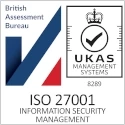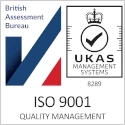15
+
YEARS OF
EXPERIENCE
1000
+
SUCCESSFUL
Projects
80
+
Satisfied
Clients

Many businesses rely on Managed Service Providers (MSPs) to manage their IT infrastructure, provide cybersecurity, and support day-to-day technology operations. Over time, however, organizations may find that their current MSP no longer meets expectations in terms of service quality, responsiveness, or strategic guidance. At that point, the question arises: How easy it is to change MSP? Understanding the process, challenges, and best practices is essential for ensuring a smooth transition without disruption to business operations.
Assessing the Need for Change
Before considering how easy it is to change MSP, organizations must first evaluate whether a switch is necessary. Common reasons for changing providers include poor response times, recurring system issues, lack of expertise, insufficient security measures, or misalignment with business objectives. Conducting a thorough assessment of your current MSP’s performance, including service level agreements (SLAs), technical expertise, communication, and strategic support, will clarify whether a transition is justified.
Once the decision is made, organizations can begin planning the change in a structured manner, reducing the risk of downtime, data loss, or operational disruption.





Evaluating Contractual Obligations
One of the first considerations in determining how easy it is to change MSP is reviewing the existing contract. Contracts may include minimum terms, notice periods, termination clauses, and specific service commitments. Understanding these terms ensures that the transition is legally compliant and financially manageable.
Organizations should also consider any dependencies on proprietary tools, platforms, or integrations provided by the current MSP. Being aware of these dependencies helps plan for data migration, system access, and continuity of services during the transition.
Preparing Your IT Environment
A critical factor in making it easy to change MSP is documenting the existing IT environment. This includes recording network architecture, device inventories, software licenses, configurations, security settings, and cloud services. A detailed record ensures that the new MSP can quickly understand and manage your systems, reducing the learning curve and minimizing errors.
Proper documentation also aids in transferring administrative access, credentials, and vendor relationships smoothly. Without this preparation, the transition could become complex, time-consuming, or risky.
MSP Overview
Our modern approach to technology and strict security measures, Proxar is a leading Managed Service Provider in the UK with clients mostly around LondonManaged Service Provider Calculator
Estimate your IT service costs and savings with our easy-to-use Managed Service Provider value calculator tool.Who is Managed Service Provider?
Learn what a Managed Service Provider is, their responsibilities, and how they support your business technology needs.
Selecting a New MSP
Choosing a new managed service provider is a crucial step in the process. Organizations should evaluate prospective providers based on technical expertise, service offerings, SLAs, security practices, scalability, and strategic guidance. Ensuring the new MSP can meet current and future IT needs simplifies the transition and sets the foundation for a long-term partnership.
Clear communication with the incoming MSP about expectations, timelines, and priorities is essential. A proactive provider will guide the organization through the change, offering support and minimizing disruptions.
Planning the Transition
The ease of changing MSP largely depends on careful transition planning. A structured approach includes defining a timeline, identifying key milestones, assigning responsibilities, and preparing contingency plans. Transition activities may involve migrating data, transferring administrative rights, configuring new systems, and training internal staff on updated processes.
A well-managed transition ensures minimal downtime, uninterrupted security monitoring, and continued access to business-critical applications. Coordination between the outgoing and incoming MSPs, when possible, further reduces risks and facilitates a seamless handover.
Mitigating Risks During the Change
Changing MSPs comes with potential risks, including service interruptions, data loss, misconfigurations, and temporary gaps in support. These risks can be mitigated by conducting pre-transition testing, scheduling migration during low-activity periods, and maintaining clear lines of communication with both MSPs.
Organizations should also prioritize critical services such as cybersecurity monitoring, backup systems, and network availability during the transition. By focusing on continuity and risk mitigation, the process of changing MSP becomes manageable and controlled.
Conclusion: Changing MSP Is Manageable with the Right Approach
Understanding how easy it is to change MSP depends on preparation, documentation, and selecting the right replacement provider. While the process may seem complex, a structured approach ensures minimal disruption and smooth adoption of new services. Proper planning, attention to contractual obligations, and collaboration with the new MSP are key to a successful transition.
Ultimately, changing MSPs is achievable and can result in better service quality, stronger security, improved efficiency, and alignment with business objectives. Organizations that approach the transition strategically can confidently switch providers while maintaining operational continuity and positioning their IT environment for future growth.

answer time
satisfaction
score
on initial call
same business
day









